Was 1976 Peak Brougham? Perhaps it was. Sure, the phenomenon of V8, RWD luxocruisers with crushed velour and landau tops went on for decades after, but in ’76, it was everywhere, and in screw the fuel economy, fully full-sized form. Also, it was the last year for the gigantic Eldorado convertible.
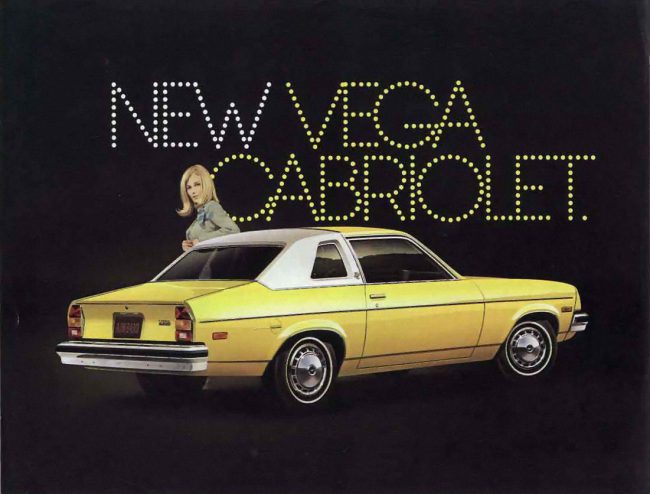
Sure, there were midsized choices, and you could even get a Vega with a landau top this year, but for the folks with deep pockets and wanting the full road isolation experience, you had to get Biggie Broughams.
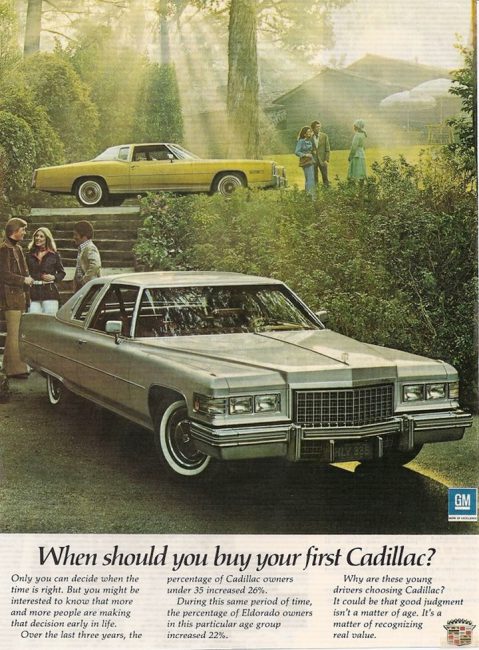
There were a score or more on hand for your inspection, starting with Chevrolet Caprice Classics and Plymouth Gran Furys and Ford LTDs, and moving steadily upward toward the top dogs, the Lincolns, Cadillacs and Chrysler New Yorker Broughams. And make no mistake, Cadillac was king in ’76.
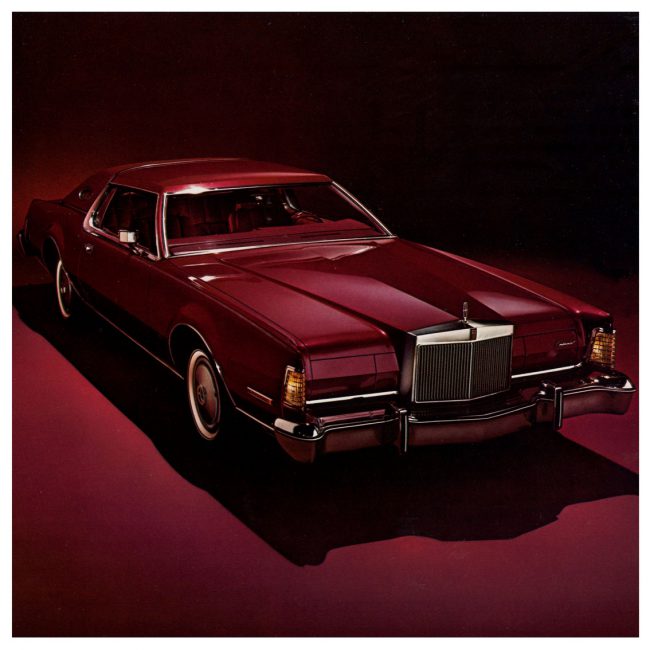
Well, in the sales charts at any rate. Cadillac consistently outsold Lincoln in the ’70s, with the exception of the Continental Mark IV, which generally trounced the Eldorado. This, despite the fact that the Eldo was also available in convertible form.

Heck, the Eldorado was born in ’53 as a convertible, and it was only in ’56 that a coupe variant was added, the Seville. But that only lasted through 1960. In ’61 it was once again convertible only.

But then, in 1967, it became FWD and coupe-only, in one of Bill Mitchell’s coolest designs, as a pricier, razor-sharp version of the Toronado. But the drop-top came back in ’71. Confusing? Yep! But I absorb all sorts of useless automotive facts. If there is ever a “Brougham” version of Jeopardy!, I will win.
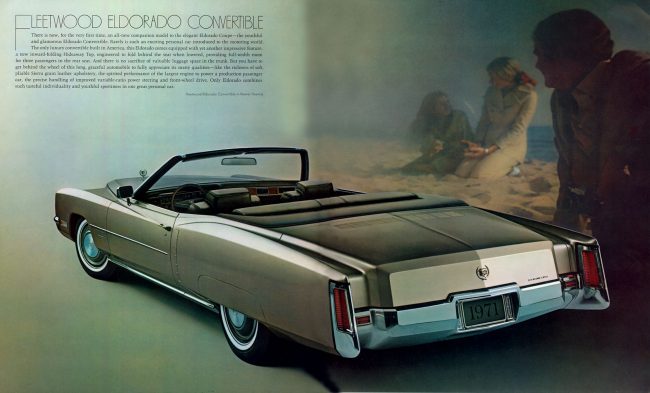
Between 1971 and 1976, there was a pesky gas crisis, and proposed legislation (which never materialized) over improved roll-over requirements of U.S. cars got lots of Detroit execs nervous. In addition, the increasing popularity and decreasing cost of factory and aftermarket automotive air conditioning led to a decline in the demand for convertibles. And so it was, with much fanfare, that the 1976 Eldorado convertible was announced as the last one.
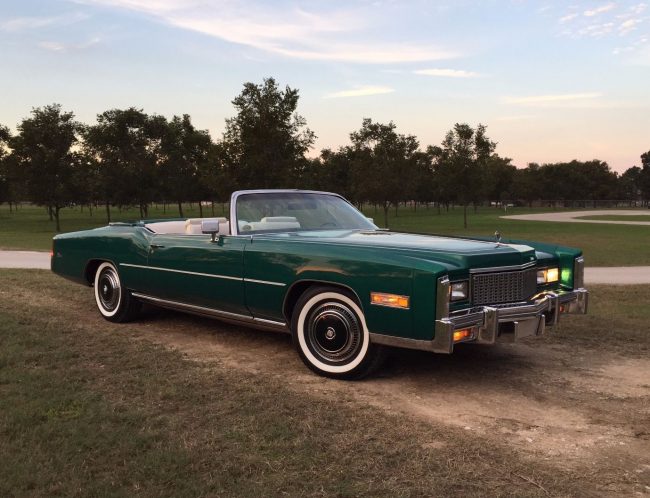
There was a stampede. GM determined that they had about 14,000 convertible top mechanisms in stock, and boy, they used every single one. Some just wanted the last new Cadillac convertible, to use and drive like any new car, some (many) were speculators who flipped for thousands over the MSRP (which was not cheap in the first place), and of course many dealers took advantage of the situation and inflated the ask themselves.
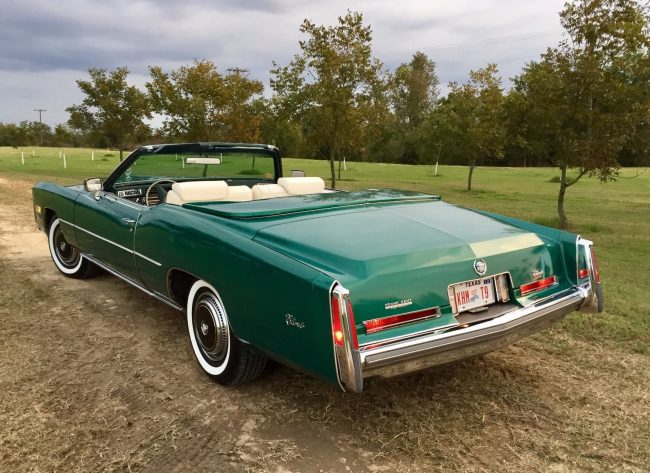
Sales of 1975 Eldorado convertibles-of which there was no LAST ONE! LAST ONE! fanfare, was 8,950. 1976 production was an even 14,000 units, 156% over ’75 demand. And they probably could have sold a couple thousand more at least, as everyone and their brother wanted one, and now!
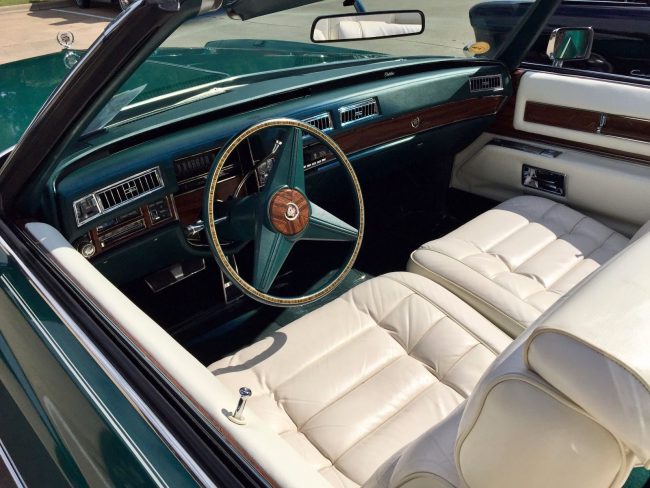
Yes, 1976 was a grand year for Cadillac, with giant lux yachts roaming the earth. Each of these fantastic, plush, open-topped conveyances turned in a curb weight of 5,153 and an overall length of 224.1″. But the recently-introduced Seville in ’75 was the future, at least in overall packaging. Luxury in a more manageable size.
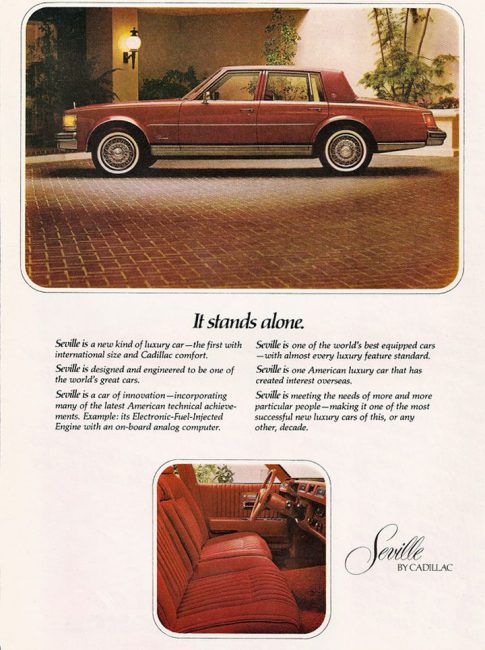
Though the mighty Eldo would hang on in all its present glory-in coupe version only, mind-though 1978, the ’77 C-Body Cadillacs would be smaller and much more in keeping with the Seville’s design aesthetic. There were smaller engines as well (with “only” a 425 CID V8 instead of the former 500-cube unit) and yet more room at the same time. The future had arrived.
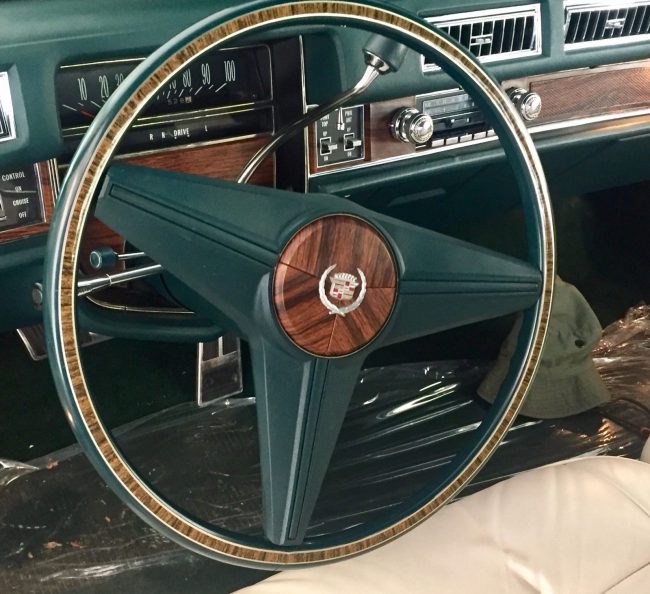
But as you may expect, there were lots and lots and lots and LOTS of ’76 Eldorado convertibles stuck in hermetically-sealed chambers, jealously hoarded by speculators. Which translates to many primo examples, never-driven or seldom-driven, being available today. Like this one, recently spotted by yours truly on the electronic bay.
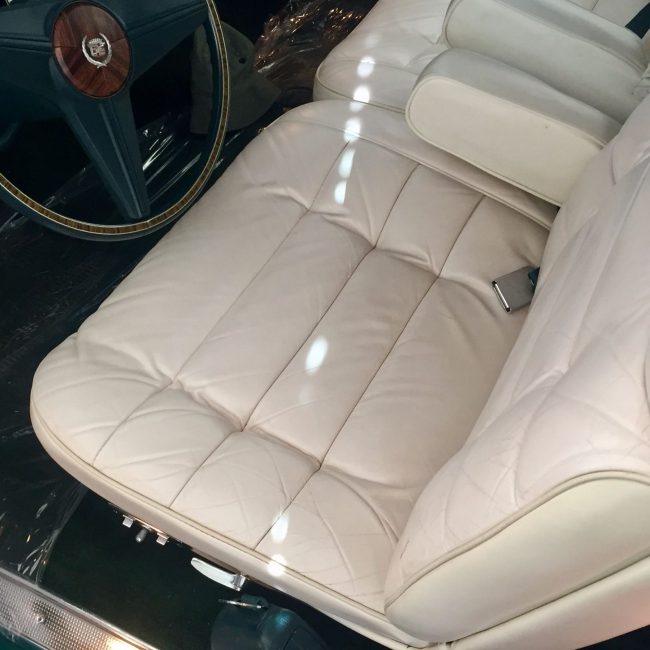
Not only is it in remarkable condition, the color combination stopped me in my tracks: Greenbrier Firemist with white Sierra grain leather and green trim, and a white top. Parade boot, too. Oh, and only 34,000 miles. Nice! It appears to be ready to go, a running and driving vehicle. There are, I’m sure, many ’76 Eldorados with five miles on the odometer, that haven’t turned a wheel since 1976 and will need EVERYTHING to get running. Not this one.
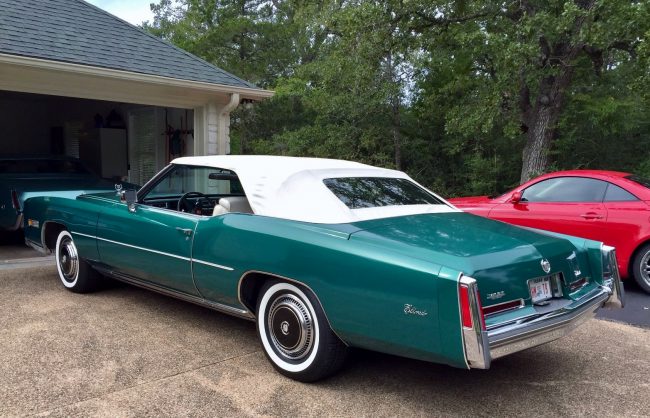
If you like your drop-top motoring in extra-jumbo size, or just want to look at more pictures of this fine green motor yacht, you can check it out here. Oh, and was this the last Cadillac convertible? Nope! In 1984 the Eldorado convertible returned, much to the chagrin of those who bought ’76s for investment purposes. The folks who bought one to enjoy and drive probably just laughed.
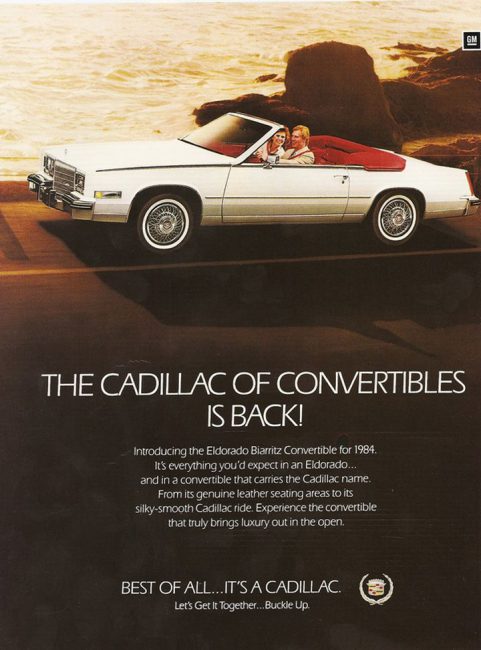
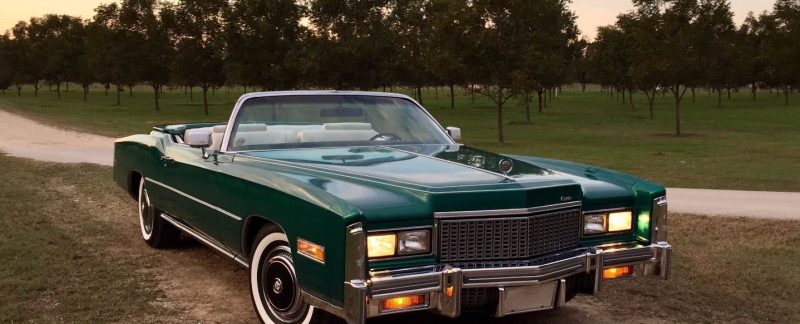

Love the Eldorado, Toronado, and Riviera, just not vinyl roofs, probably my favorite gm luxury cars, preferably pre 1973, seems like after 1970, materials were cheapened and these cars fell apart, nice article!
Those greens are amazing, especially when compared to today’s bland black/white/grey-silver and some safe red and blue palette new car buyers are forced into these days.
It took a couple decades, but the 501 series engines in 472 and 500 cubic inch displacements have finally been recognized as an outstanding design unfortunately strangled by hastily applied emission control systems. Replacing the huge cast iron intake manifold, itself sunk into the lifter valley, with a modern aluminum dual plane casting, can bring the monster motor’s weight down to within shouting distance of an iron headed SBC, and there are a couple of nice aluminum head styles available which can really uncork the engine’s power potential. The major modification involved relates to relocating the massive a/c compressor, which was placed above the sunken manifold and precluded any serious power building experimentation in the 70s and 80s. Even keeping things quiet underhood, you could break a lot of hearts these days with a well massaged 500ci Eldorado.
That’s another bit of Cadillac trivia: the 501 series engine was available in 472 and 500 cubic inch displacements, but Eldorados were the only model which had 500s fitted exclusively once it was available. The buyer had to specifically request the larger engine for Fleetwood and Seville models in Cadillac’s big car line.
1967 was the last year of the 429, and I don’t recall if the concealed headlight design continued into the 500ci era, which would necessitate an anachronistic swap in order to create what would be my favorite Cadillac combination.
I never understood the investment car purchase: if you can’t use it, you don’t really own it.
Thanks for the trivia.
Gramps had Eldo verts’ in red and then green, possibly this green/white, if memory serves.
The last year the Eldorado had hidden headlights was 1968. In 1969 they were gone for good.
Had to chime in, some wrong stuff here.
The 500 was an Eldorado exclusive from 1970 to 1974, 1975-1976 Cadillacs all have the 500, except for the Seville, which had an Oldsmobile based 350 purchased from Oldsmobile by Cadillac and assembled by Cadillac.
There was no way to get a 500 or a 472 or anything but a 350 in a Seville.
The 472 came out in 1968 and it was the standard engine in all Cadillacs, including 1968 and 1969 Eldorados,
There was no way to “spec up” to a 500 in any of the standard Cadillacs, they came with a 472, until 1975, when they all became 500’s.
My mother had a 1979 Eldorado, and I was too young to appreciate it at the time. Now I can only vaguely regard the vehicle through hazy 30 year old memories of the disinterested. My only strong memory was when I got chewing gum on the rear seat leather. I still hear about that one occasionally.
As far a malaise era cars go, the V8s all seem to still pack a healthy dose of torque at very low rpm by modern standards. My mother’s 1979 Eldorado made its peak 269 ft-lbs at an almost turbo-like 2000 rpm. Was that a deliberate attempt to maintain the illusion of big power, a side effect of how they had to strangle the engines in those days, both, or none of the above?
I remember an old Car & Driver column from, I think, ’88 or ’89. Back then each issue had a few columns from guys like Csere, Ceppos, Bedard, Yates, Philips, etc. Ceppos wrote one about people asking him what kind of car he owned, comparing it to finding out what Julia Child made herself for lunch. People really were surprised when he said “a 1976 Cadillac El Dorado convertible.”
While Bill Mitchell was in charge of GM Design at the time, the ’67 and ’71 Eldorados were both based on drawings by Wayne Kady, who was later in charge of Cadillac styling. Undoubtedly Kady was appealing to his boss’ tastes, particularly with those sharp creases on the ’67. Mitchell probably had a more of a direct influence on the way particular GM cars looked than his mentor, Harley Earl.
I remember these cars from new, but when I see them today, I’m always surprised by how big they are. Last summer I saw a well-kept white one in traffic, and it was steaming through traffic like an ocean liner surrounded by dinghies. This green with white example is stunning.
My parents bought one brand new in 76. We were always a convertible family. That thing could lay rubber off the line. It was sharp looking when you put the fibreglass boot cover over the top.
No back seat room and lets not talk about build quality.
My first car was a 68 Impala convertible and I currently drive a 65 Falcon convertible.
–Stephen
If you haven’t already, you or maybe Ronnie or Brendan should do a history of the demise of domestic convertibles in the 70s. If you have already please post the link.
I’m restoring a 76 Eldorado convertible (emerald green interior) and need a steering wheel (dark green, wood inlay) in good to excellent (no cracks) condition. Any ideas?
Pingback: Retro Show: Where Were You In '82? - Riverside Green